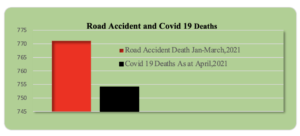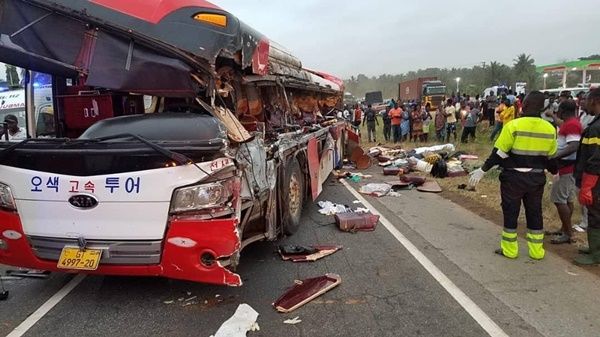An alarming rate of road traffic accidents in Ghana with its related fatalities hit the media landscape recently with an awful picture of poor road safety performance. Following this, in the past few days, many analysts have engaged the media space with infographics that compares fatalities due to Covid-19 and those as result of road traffic accidents.

As to whether it is statistically sound to compare fatality counts over twelve months to same over three months is a debate left for social scientist and researchers.
But for the ordinary mind, comparing 771 deaths in road traffic accidents in three months to 754 deaths due to the dreaded covid-19 in more than twelve months, throws a very comprehensive but disturbing light on the national road traffic management system.
Data from the national road safety authority indicates that 1.6% of GDP is lost through road accidents annually. That is a lot of money and social cost. The invaluable and highly devastating impact of this on family ties is reason enough for any government to reposition the management of our road traffic system high on the ladder of its socio-political agenda as an action oriented top priority with no lips service.
A robust road safety management system goes beyond reducing road accident statistics to the promotion of a safe road traffic system. One major factor requiring attention is the road user and for that matter their unsafe behaviors sometimes captured as human error.
Human error has been registered by many researchers as the highest contributing factor to the many accidents on our roads. Consensus among road traffic management experts worldwide, indicates that human error in the form of aggressive driving, drunk driving, not using personal protective equipment, over speeding, drowsy driving, and distracted driving contributes to over 90% of road traffic accidents.
The remaining less than 5% of road traffic accidents can be attributed to the road infrastructure, the vehicles, the legal framework on driver training, licensing, fitness standards and enforcement.
Most experts suggest the practice of defensive driving as a control measure against road traffic accidents. This requires of drivers, a set of skills to be able to protect themselves against potential hazards posed by drunk road users, poor vehicular condition, bad weather condition and many other unanticipated hazards.
At the center of defensive driving is human behaviour. This is to suggest that until our national interventions are focused on promoting positive road user behaviours, we will continue to record those horrific but avoidable accidents on our roads.
We have the laws to control and curtail unsafe road user behaviours, but unfortunately as has been in many cases, we lack the will and commitment to enforce these laws. This is what breeds the carnage on our roads.
We need to pay attention to the operational conditions of our road traffic system and the impact of road safety interventions. What key performance indicators have we in place to correct the situation and how well have they served that purpose? Road accident and associated social cost prediction models can aid in identifying potential safety issues and the mitigating measures necessary.
How has the use of traffic control cameras, police visibility, speed guns, and speed limits impacted on unsafe behaviours on our roads?
A lot of commitment to advocacy and awareness creation is required to create a safe road traffic system in our country, and this calls for increased public engagement and media content creation around the topic.
By:
Foster Edem Tofoatsi
HSE Professional



